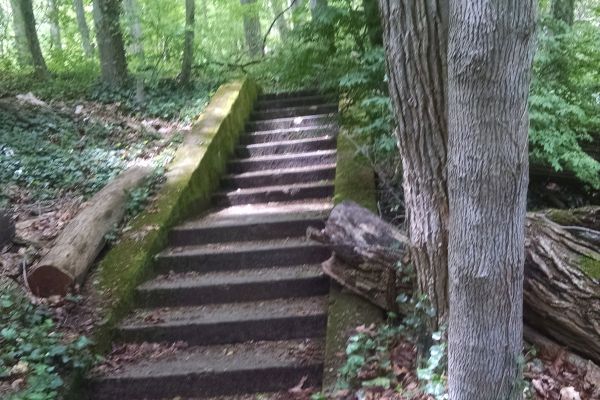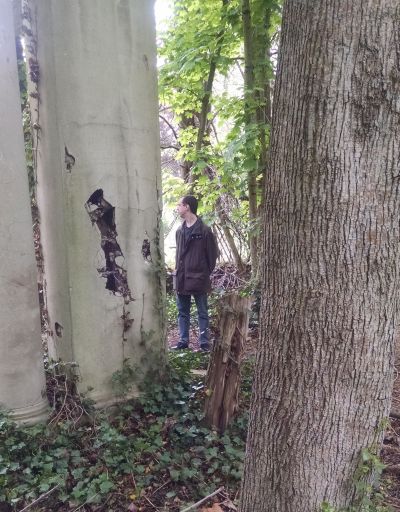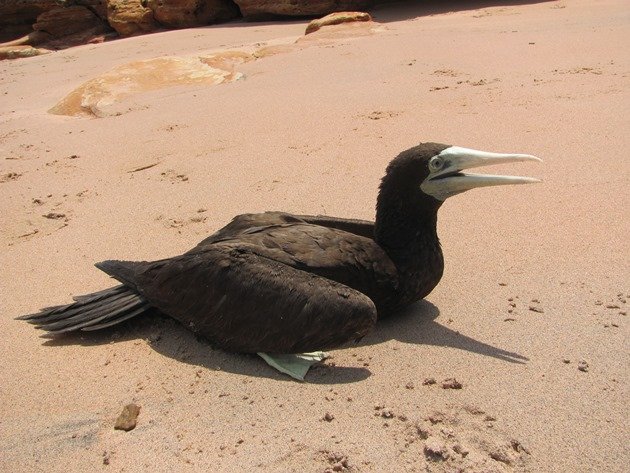
Long Island is a land of many stereotypes, yet “forests full of mysterious ruins” is not really one of them. But when you can’t get to Peru, sometimes you just have to make do closer to home — for instance, at the Muttontown Preserve.
Muttontown, an evocatively-named village in the evocatively-named town of Oyster Bay, is part of Long Island’s fabled “Gold Coast” — the area known for its excess of Vanderbilts, Guggenheims, and Pratts and for being documented by the glittering typewriter of F. Scott Fitzgerald. This pocket description may not make this sound like a particularly birdy area, but even for nature, fate can take strange turns.
In 1951, King Zog I, the exiled ruler of Albania (I am making not a word of this up) bought an estate called Knollwood in Muttontown. Built almost half a century earlier for the steel magnate Charles Hudson, in its heyday it included not only a palatial mansion and formal decorative gardens but also a large walled vegetable garden and working dairy farm. Unfortunately, fallen royalty are notoriously flaky, and while Zog had big plans for his purchase, he never moved in and left it to stand empty. Meanwhile, rumors spread that royal treasures were hidden somewhere inside the place and vandals came out in force. By the time Zog sold Knollwood off four years later, it was a wreck; the house was so badly damaged that it had to be razed. Eventually the grounds became part of the Muttontown Preserve, and today only a few remnants of the never-quite-palace can be seen.
While this was a pretty dismal episode in the annals of capitalist excess, it did turn out to be an ok outcome for the birds. Today the Muttontown Preserve is a combination of tangled second-growth forest and open fields, suitable breeding habitat for a wide variety of beloved bird species. On my own trip out there I was able to show my non-birding but interested companions such crowd-pleasers as Baltimore Oriole and Scarlet Tanager, Rose-breasted Grosbeak and Eastern Towhee, Blue-gray Gnatcatcher, Veery, and Wood Thrush — none of them particular rarities, but all the sorts of birds that you can point to and say “Look at that! Isn’t it cool?”. Though we arrived a bit late for peak warbler and missed a reported singing Kentucky Warbler, Blue-winged, Yellow, American Redstart, and Common Yellowthroat were all on what looked to me like plausible breeding territory, and again, they made the day lively and interesting for both me and my friends.
Another expected, but decidedly less welcome, species was also spotted in abundance that day as well. Dog ticks have been a bugaboo of mine ever since my first trip to Bear Mountain. Although I tried to be vigilant in inspecting my pant legs before I got back into my friend Myrrah’s car for the ride home, there were still several wretched hitchhikers who had to be flung out the car window and who left me with phantom itching for days. Like most of Long Island, this is a place to take precautions and tuck your pants into your socks. The good news is, old money doesn’t care if you look eccentric — a lot of them look even weirder than that.






 New writers welcome – please contact us for details.
New writers welcome – please contact us for details.

















Leave a Comment